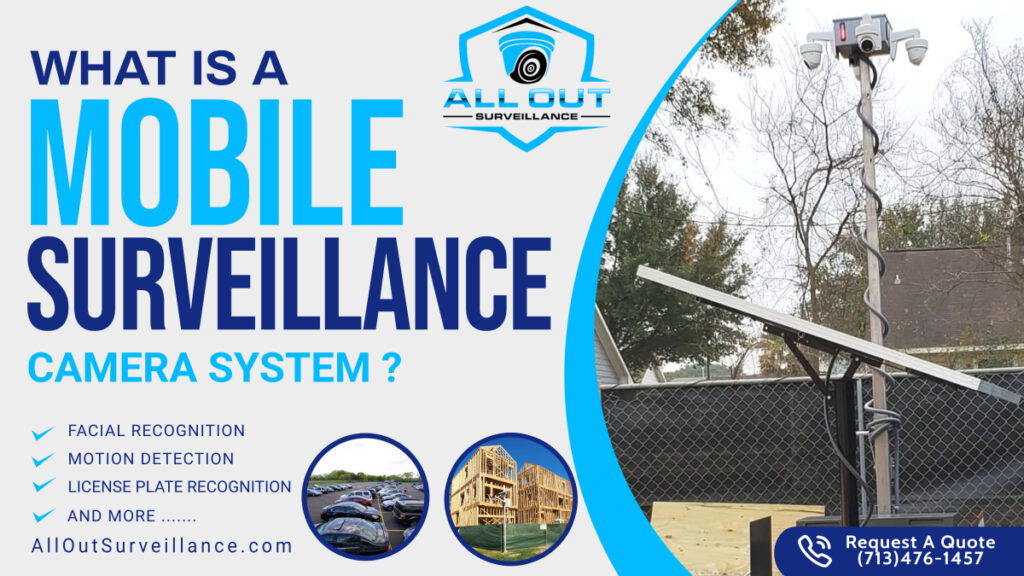
A mobile surveillance camera system is a type of security system that uses wireless or cellular technology to monitor and record activity in a particular area. Unlike fixed surveillance cameras, which are stationary and typically mounted to walls or poles, mobile surveillance cameras are designed to be portable and can be quickly deployed in different locations. These cameras can be used for a wide range of applications, from law enforcement and public safety to construction sites and event monitoring.
Mobile surveillance camera systems typically consist of one or more cameras, a wireless or cellular connection, and a control center or monitoring station. The cameras are often mounted on trailers, trucks, or other vehicles, which can be easily transported to different locations. They may also be mounted on poles or other structures, depending on the application.
Surveillance System Advantages
One of the key advantages of mobile surveillance camera systems is their flexibility and versatility. Because they are not tied to a fixed location, they can be used in a variety of settings and situations. For example, they can be used to monitor construction sites to prevent theft and vandalism, to provide security for public events, or to assist law enforcement in investigations and surveillance operations.
Another advantage of mobile surveillance camera systems is their ability to be quickly deployed and set up. In many cases, these systems can be up and running in a matter of minutes, making them ideal for emergency situations where time is of the essence.
Mobile surveillance camera systems may also include advanced features such as motion detection, facial recognition, and license plate recognition. These features can help to identify potential threats or suspicious activity and provide real-time alerts to security personnel or law enforcement officials.
System Concerns
One important consideration when using mobile surveillance camera systems is privacy. Because these cameras are portable and can be placed in a variety of locations, there is a risk that they may capture images or video of individuals who are not involved in any criminal activity. It is important for organizations and law enforcement agencies to have clear policies and procedures in place to protect privacy rights and ensure that the cameras are only used for legitimate purposes.
Mobile surveillance camera systems are also subject to potential hacking and cybersecurity threats. As with any wireless or internet-connected device, there is a risk that unauthorized individuals could gain access to the cameras or control center and compromise sensitive information. According to Forbes, “surveillance cameras…are full of vulnerabilities that can be exploited by hackers”. It is essential for organizations and agencies to take appropriate steps to secure their mobile surveillance camera systems, such as using strong passwords, encrypting data, and regularly updating software and firmware.
A mobile surveillance camera system is a flexible and versatile security solution that can be used in a variety of settings and situations. These systems provide real-time monitoring and recording of activity, and can be quickly deployed to different locations. However, it is important to consider privacy and cybersecurity risks when using these systems, and to have appropriate policies and procedures in place to protect sensitive information and ensure that the cameras are used for legitimate purposes.



